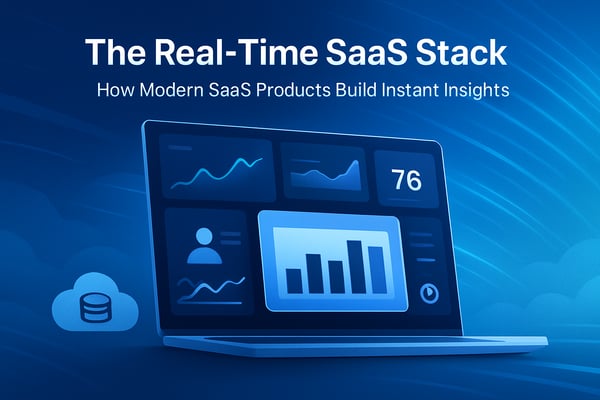2024 was another year of rapid innovation for the database industry, with the focus on real-time insights and powering AI applications. Vector data became mainstream, enabling
databases to store embeddings and perform semantic searches.
After newcomers specializing in vector databases took an early lead in offering these capabilities, established general-purpose database vendors soon caught up. These multi-model databases allow hybrid search and querying across structured, semistructured,
and unstructured data with a unified query language.
While cloud-native databases remain an important part of the landscape, distributed and hybrid architectures continued to evolve.
2025 is just around the corner, what do we see as important trends for the new year?
What's ahead in 2025?
Continued Growth of AI Powered Real-Time Analytics
Database vendors will continue to enhance support for vector embeddings to enable fast, AI-powered analytics. These specialized data types store high-dimensional vectors for
applications including recommendation engines, NLP, and image recognition.
Greater Adoption of Multi-Model Databases for Hybrid Search
Multi-model databases supporting hybrid search across structured, document, and vector data will continue to thrive. This unified approach allows enterprises to combine relational
queries, full-text search, and vector-based similarity search in a single database. For example, a retailer could analyze sales, product descriptions, and customer feedback together, enabling a holistic view without replicating data, or working with different
query syntaxes.
The Rise of Distributed Databases for Scalable Real-Time Analytics
The demand for real-time analytics from high-volume data sources will continue to bring distributed databases into the mainstream. Distributed, horizontally scalable databases provide low latency that industries such as finance, IoT, and manufacturing require for analytical workloads. Distributed databases handle huge data volumes, delivering instant insights.
The ability to scale the database across multiple nodes and support ad-hoc queries will be key for faster decision-making and continuous analytics on streaming data.
Flexible Deployment Models
The flexibility to deploy a database across edge, on-premises, and cloud environments remains essential, especially for industries including manufacturing, healthcare, and energy. Hybrid deployments allow data processing close to the source—perhaps on IoT devices—while centralizing broader analytics and longer-term storage.
Meeting these challenges with CrateDB
CrateDB is a distributed, multi-model database for real-time analytics and hybrid search. How can we help you get the most from your data?
Multi-Model Hybrid Search
CrateDB’s multi-model capabilities allow you to query structured, document, and vector
data together. For example, enterprises can analyze customer behavior, perform full-text search over product reviews, and use vector embeddings to find similar items—all within CrateDB. This unified approach supports complex, hybrid searches across
diverse data.
Real-Time Analytics at Scale
With its distributed query engine and columnar storage, CrateDB is optimized for real-time
analytics over large datasets. It scales horizontally, making it ideal for high-velocity environments such as IoT and finance where continuous, low-latency analytics are crucial.
Real-Time Data Indexing
CrateDB indexes everything as it is ingested, using strategies appropriate to each data type. The highly performant ingestion and indexing process makes data available to query near instantaneously. This ensures that dynamic, ad-hoc queries execute efficiently, minimizing the time between new data arriving and acting upon insights gained from it.
Flexible Deployment Options
CrateDB can be deployed across edge, on-premises, and cloud environments, allowing
businesses to adopt architectures that meet operational needs. This flexibility makes CrateDB ideal for industries requiring localized processing with centralized analytics.
Ease of Adoption
CrateDB is compatible with existing third-party libraries and tools, lowering the adoption curve. Using SQL for queries, developers and data scientists can leverage their existing skills.
Try CrateDB today!
Whether you’re dealing with large-scale, low-latency data processing or integrating AI applications requiring semantic search, CrateDB has all you need to stay ahead of the curve.
Visit the CrateDB Academy to enroll in our online course. Using real-world data, you’ll learn to perform powerful searches and aggregations with SQL.
As we step into 2025, we wish you success with your endeavors. Databases continue to evolve, and we’re excited to keep delivering powerful tools that unlock your data’s full
potential. Here’s to an exciting year ahead!
This article is part of the best practice report: "What's ahead in data architecture for 2025". You can download the copy here.


